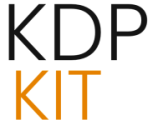
The Power of the Echo: Revitalizing the Back Catalog
A new book is exciting, but the true measure of an independent publishing *enterprise* is the health of its entire library. In a market struggling with saturation, the untapped potential residing in older, dusty titles is finally getting the strategic attention it deserves. The focus on revitalizing back catalogs is one of the most potent strategies independent creators are employing in 2025.
This isn’t about simply re-listing an old file. It’s a tactical overhaul. A book that was published five years ago might have been invisible then due to poor metadata or an outdated cover aesthetic that no longer fits the current market trends. Today, data analytics and AI-driven insights allow publishers and authors to review their entire catalog, identify titles with untapped potential, and give them a strategic relaunch.
Metadata as a Modern Discovery Lever. Find out more about Long-term sustainability for independent publishing.
The discovery process has been fundamentally altered, especially with the rise of sophisticated AI search tools in academic and general research contexts. Content that is not properly structured—with precise metadata, accurate subject classifications, and indexability—simply does not exist to the end-user. For the independent publisher, this means treating metadata updates not as clerical tasks, but as high-impact marketing campaigns.
- Audit and Refresh: Scrutinize the top 10% of your catalog (by original sales or genre popularity). Are the keywords in your title and description still the ones readers are using in 2025?
- Aesthetic Alignment: Does the cover of your 2021 paranormal romance still resonate, or does it look like a relic from a bygone era? Updating cover art to match current genre aesthetics is a proven method for granting older titles “renewed relevance”.
- Format Expansion: Take older ebooks and commission an affordable audiobook version. This immediately unlocks a new segment of the market that consumes content via listening—a massive, still-growing segment.. Find out more about Long-term sustainability for independent publishing guide.
Think about the author who published four books a year for ten years. That’s a 40-book catalog. If each of those older titles, through minor updates and strategic promotion, can generate even a modest sum monthly, the cumulative effect is a stable, passive income floor—an echo chamber of sustained viability. This contrasts sharply with the pressure to constantly produce a new, high-volume hit just to keep the lights on. We have a detailed guide on optimizing metadata for discovery that breaks down the technical side of this process.
The Endurance Cadence: Disciplined Production and Burnout Prevention
The initial phase of independent publishing often required “relentless volume.” You needed to prove you were committed; you needed to feed the platform algorithms, and you needed to rapidly build your back catalog. That frantic pace, however, is the primary engine of creator burnout. The maturity phase recognizes that a reliable *cadence* is more important than a relentless *pace*.
The question is not, “How many books can I release this year?” but rather, “What is the *most consistent, high-quality* schedule my creative process can sustain indefinitely?” For most established independents in 2025, this has settled into a slower, more deliberate rhythm. The market now rewards *reliability* above mere frequency. Readers want to know that when they join your mailing list, they are subscribing to a dependable source of quality content, not an erratic series of sporadic blasts.. Find out more about Long-term sustainability for independent publishing tips.
Structuring Time for Depth, Not Just Output
The pressure to produce content across multiple fronts—writing, formatting, marketing, social media management, direct sales fulfillment, and community building—is immense. When creators begin to scale back the *quantity* of output, they must strategically reinvest that saved time into the *quality* of their product and the *depth* of their audience relationship.
If you are a novelist who used to finish a book in nine months, aiming for a book every six months might have been unsustainable. Now, the goal is to use that extra three months for dedicated work in areas that build long-term equity, such as:
- Professional Development: Investing more time in advanced editing, manuscript critique, or mentorship, moving beyond the basics of self-editing.. Find out more about Long-term sustainability for independent publishing strategies.
- Deep Community Dive: Hosting smaller, high-value Q&A sessions, running a closed reader group with exclusive content drops, or writing more personal, narrative-driven content for the newsletter. This builds the loyalty mentioned previously.
- Rights Exploration: Actively looking into subsidiary rights—licensing deals, foreign translations, or adaptation pitches—a complex task that requires dedicated focus outside the writing sprint.
This disciplined production schedule directly combats the sense of professional uncertainty that many creators feel. While only a small fraction of all creators hit the six-figure mark, those who treat their publishing like a true business, which requires structured time management, have a far greater chance of achieving financial stability. This requires a deep dive into preventing creator burnout with time blocking techniques.
The Road Ahead: Strategic Positioning for the Next Wave. Find out more about Long-term sustainability for independent publishing overview.
The independent publishing movement has proven its resilience. It survived the initial hype cycle, navigated platform upheaval, and is now settling into a rhythm defined by strategy over mere hustle. Looking forward, the trajectory is clear: it will be less about conquering the giants and more about building self-sustaining, fortified ecosystems around individual creators and specialized small presses.
The global book publishers market is still projected to grow, albeit steadily, with independent authorship fueling a significant portion of that expansion, suggesting the *opportunity* is not diminishing, only changing its shape. The path to continued success—the endurance engine—will require creators to be astute business owners, dedicated community cultivators, and intelligent asset managers.
Key Takeaways and Actionable Insights for Endurance
If you are building or currently running an independent creative enterprise, make sure your focus for the next 12 months aligns with these proven endurance principles. Success today is not just about the quality of the story, but the quality of the *structure* supporting it.. Find out more about Durable model for independent creative enterprise definition guide.
Actionable Takeaways:
- Mandate Diversification: If you have fewer than five distinct income streams derived from your work (e.g., platform sales, direct sales, audiobooks, services, merchandise), prioritize building the next two. Do not wait for a slow month to start.
- Audit Your Archive: Schedule a formal ‘Back Catalog Revitalization Sprint’ for Q1 2026. Dedicate a week to updating metadata, testing a new cover design on one older title, and re-launching it to your email list. See what sticks.
- Formalize Community Investment: Allocate a minimum of 15% of your non-creation/non-business management time *specifically* to proactive community engagement—not just responding to direct messages, but initiating conversations, creating exclusive content previews, or soliciting reader feedback on minor project decisions.
- Own Your Funnel: Determine the exact percentage of your income derived from platforms where you do not own the contact list (i.e., not your email subscribers). If this number is over 70%, dedicate focused energy to growing that owned list with exclusive lead magnets. A strong email list growth strategies guide can help accelerate this.
The independent publishing movement is entering its next great chapter—the one where the initial rush of excitement solidifies into the quiet, powerful hum of a well-maintained machine. The future belongs to those who build for the long haul, not just for the next headline. The marathon starts now.
What part of your business model are you most focused on fortifying for the next five years? Share your thoughts below—let’s discuss the next level of endurance.










